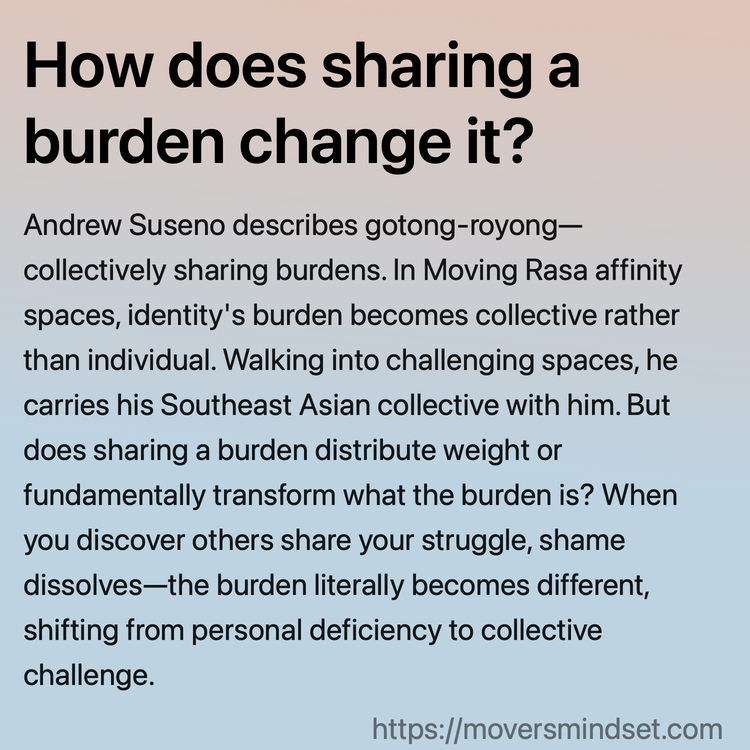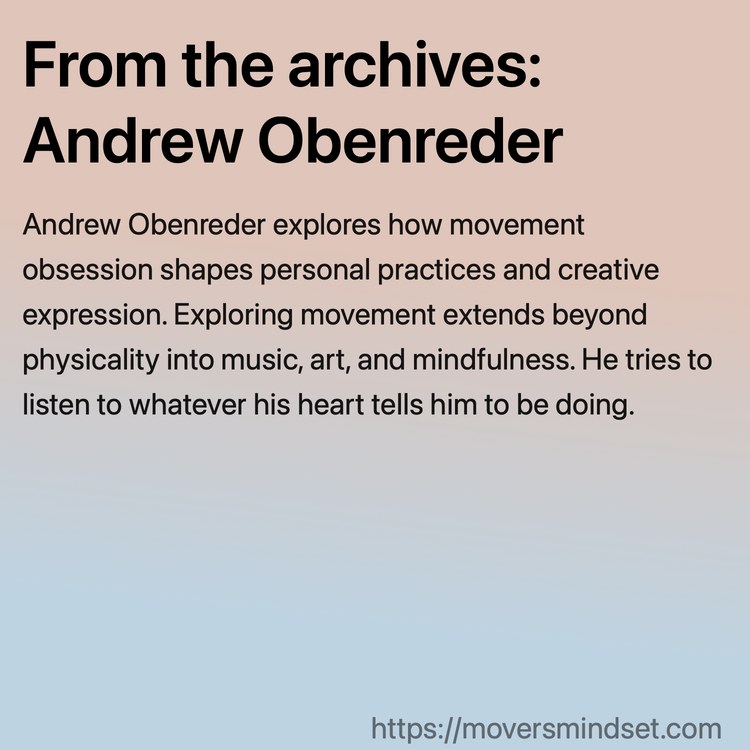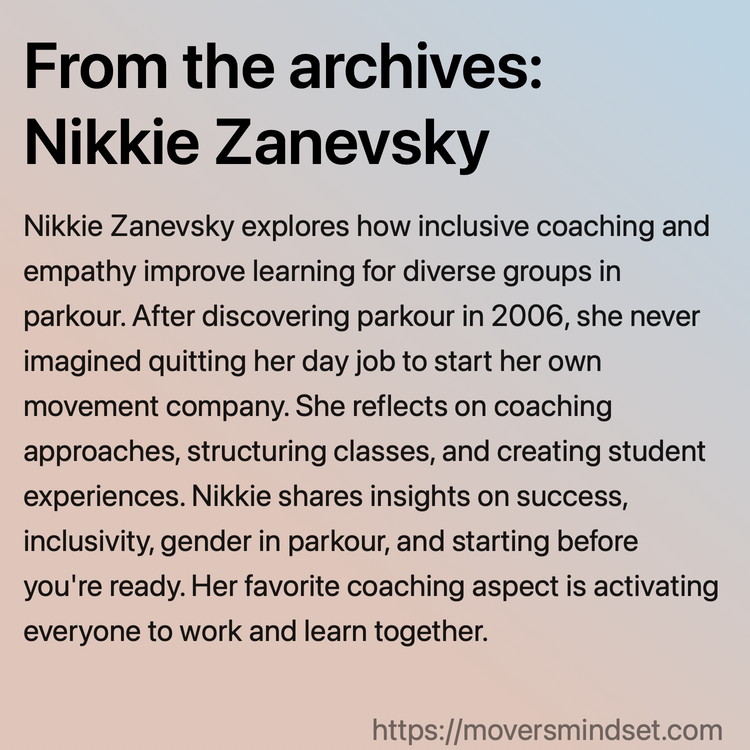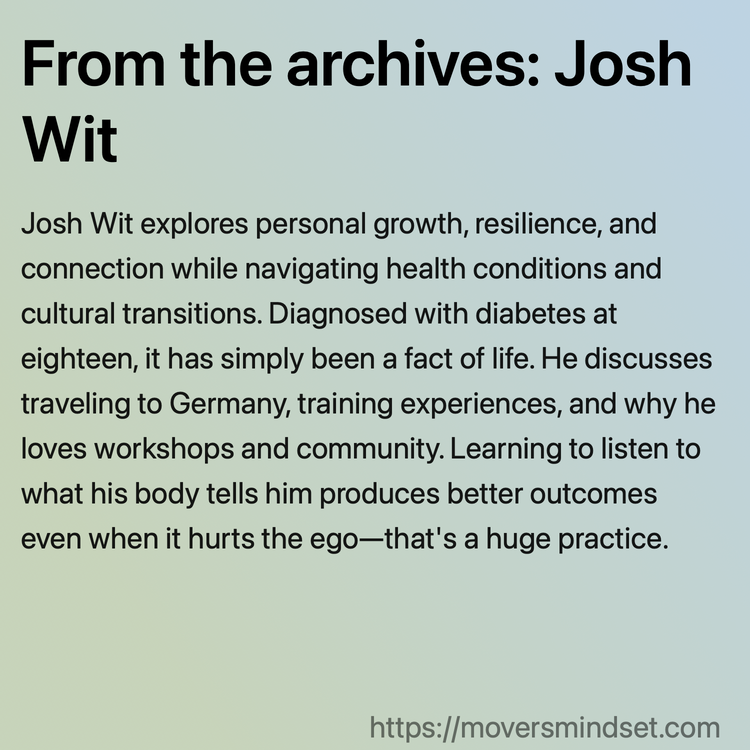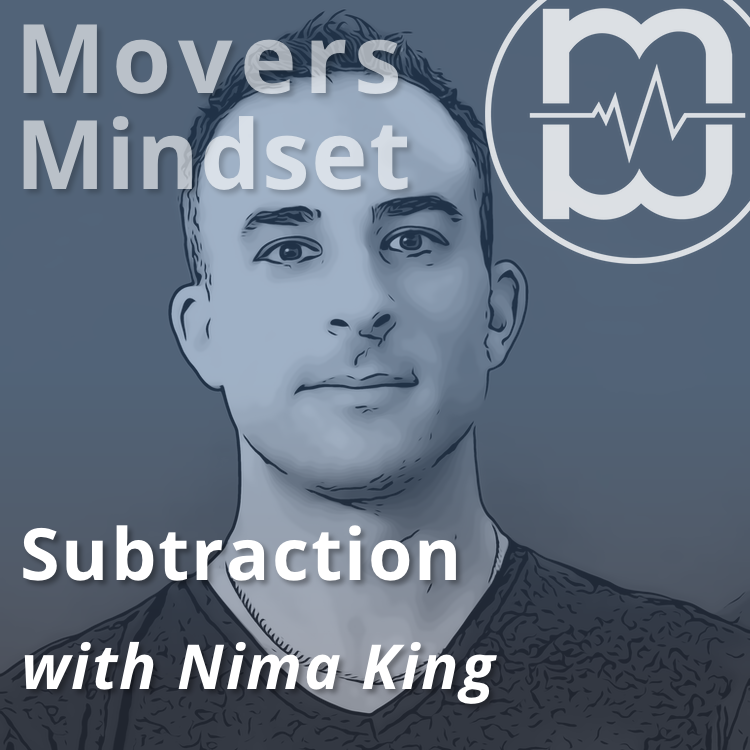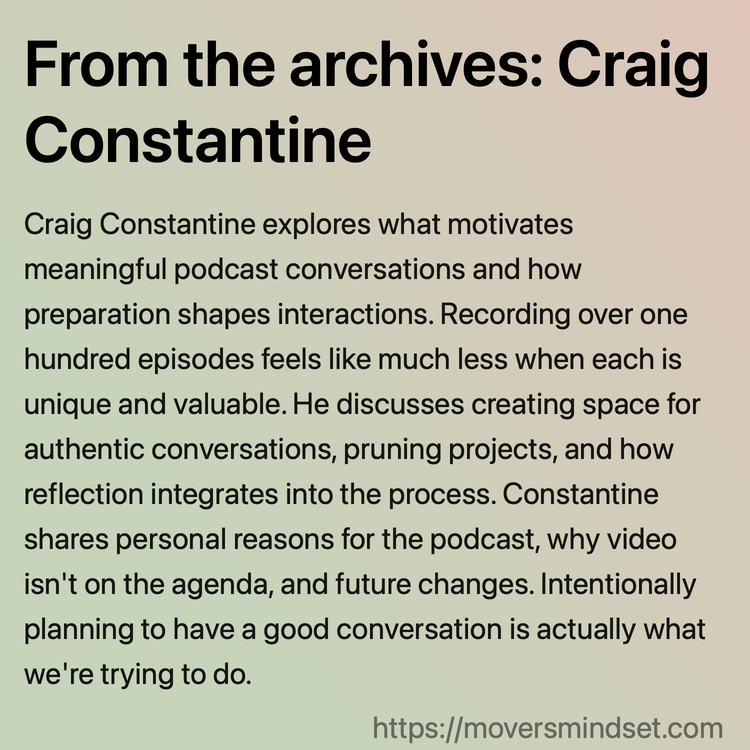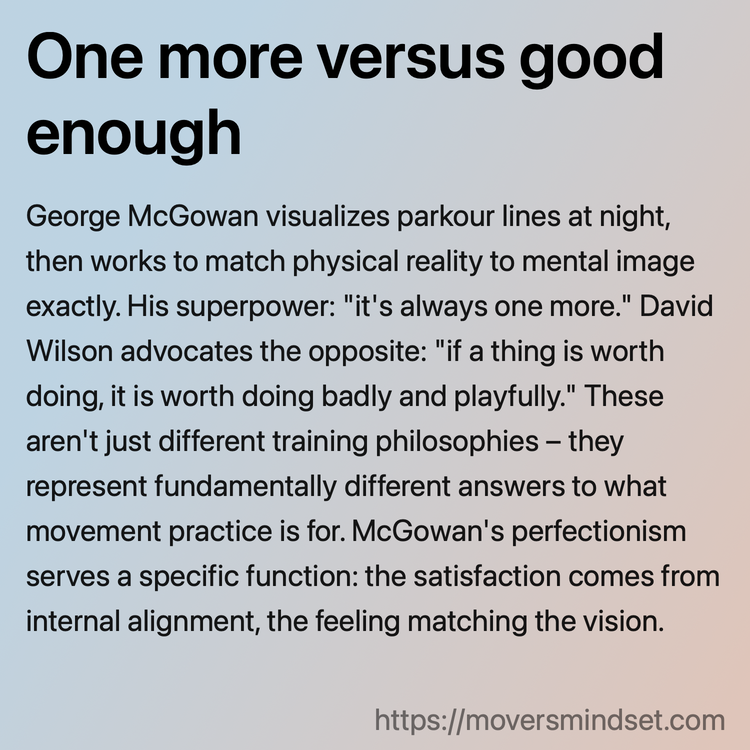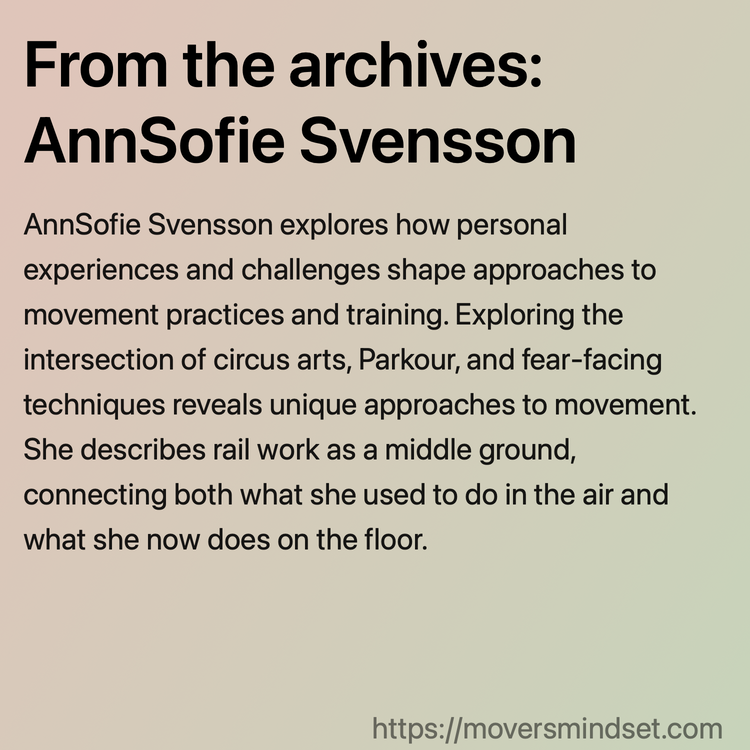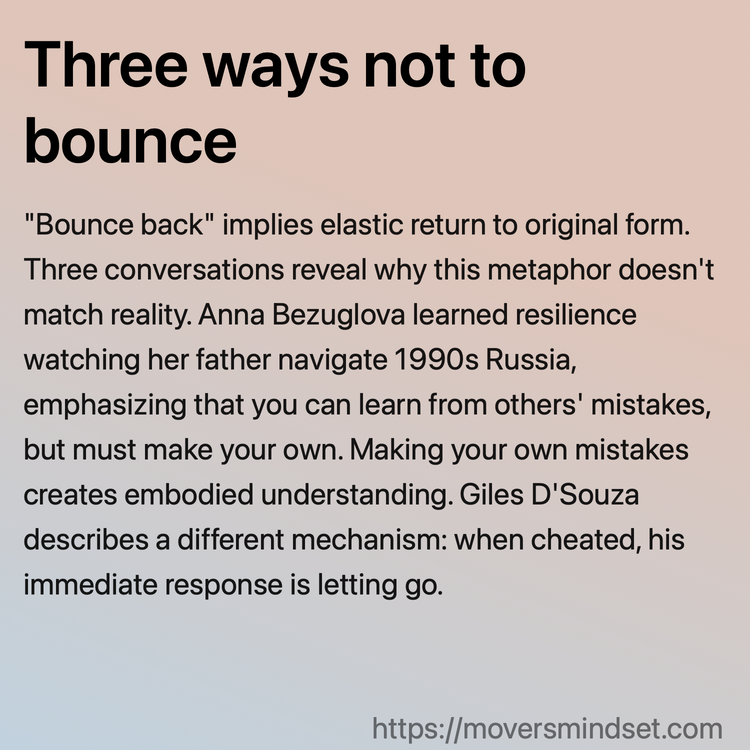Craig Constantine
How does sharing a burden change it?
Andrew Suseno describes gotong-royong—collectively sharing burdens. In Moving Rasa affinity spaces, identity’s burden becomes collective rather than individual. Walking into challenging spaces, he carries his Southeast Asian collective with him. But does sharing a burden distribute weight or fundamentally transform what the burden is? When you discover others share your struggle, shame dissolves—the burden literally… more →
From the archives: Andrew Obenreder
Andrew Obenreder explores how movement obsession shapes personal practices and creative expression. Exploring movement extends beyond physicality into music, art, and mindfulness. He tries to listen to whatever his heart tells him to be doing. more →
What gets lost when everyone’s experimenting
René Scavington describes early parkour as “a little meaner,” where trying something experimental would get hated on. Now experimentation gets celebrated, which seems clearly better. But what gets lost when experimentation carries no social cost? When everything playful gets love, experimentation becomes performance rather than genuine exploration. Real experimentation might actually be harder now. There’s… more →
From the archives: Nikkie Zanevsky
Nikkie Zanevsky explores how inclusive coaching and empathy improve learning for diverse groups in parkour. After discovering parkour in 2006, she never imagined quitting her day job to start her own movement company. She reflects on coaching approaches, structuring classes, and creating student experiences. Nikkie shares insights on success, inclusivity, gender in parkour, and starting… more →
When standing still is the hardest thing
Nima King trained as a bouncer and martial artist, but hours of standing practice in a Hong Kong living room proved hardest of all. Standing still with nowhere to hide brings up inner demons—no opponent, no technique, no external challenge to justify why it feels so difficult. We measure difficulty through intensity and complexity, but… more →
From the archives: Josh Wit
Josh Wit explores personal growth, resilience, and connection while navigating health conditions and cultural transitions. Diagnosed with diabetes at eighteen, it has simply been a fact of life. He discusses traveling to Germany, training experiences, and why he loves workshops and community. Learning to listen to what his body tells him produces better outcomes even… more →
Subtraction with Nima King
What happens when you stop trying so hard and learn to find power through subtraction rather than addition? Wing Chun training in a Hong Kong living room involves hours of standing still with no sparring, forcing practitioners to confront inner demons and abandon Western goal-seeking mentality. “I’ll tell you, Craig, this was the hardest thing more →
The sense you can’t teach
Cristina Latici, a movement coach and former dancer, describes being dragged by a dog toward a lamppost. Her body automatically solved the problem, spinning around the post to dissipate force. She calls this “touch”—an intuitive sense developed through years of physical discipline. It’s not just spatial awareness, but having a library of movement solutions available… more →
From the archives: Craig Constantine
Craig Constantine explores what motivates meaningful podcast conversations and how preparation shapes interactions. Recording over one hundred episodes feels like much less when each is unique and valuable. He discusses creating space for authentic conversations, pruning projects, and how reflection integrates into the process. Constantine shares personal reasons for the podcast, why video isn’t on… more →
One more versus good enough
George McGowan visualizes parkour lines at night, then works to match physical reality to mental image exactly. His superpower: “it’s always one more.” David Wilson advocates the opposite: “if a thing is worth doing, it is worth doing badly and playfully.” These aren’t just different training philosophies – they represent fundamentally different answers to what… more →
From the archives: AnnSofie Svensson
AnnSofie Svensson explores how personal experiences and challenges shape approaches to movement practices and training. Exploring the intersection of circus arts, Parkour, and fear-facing techniques reveals unique approaches to movement. She describes rail work as a middle ground, connecting both what she used to do in the air and what she now does on the… more →
Three ways not to bounce
“Bounce back” implies elastic return to original form. Three conversations reveal why this metaphor doesn’t match reality. Anna Bezuglova learned resilience watching her father navigate 1990s Russia, emphasizing that you can learn from others’ mistakes, but must make your own. Making your own mistakes creates embodied understanding. Giles D’Souza describes a different mechanism: when cheated,… more →
